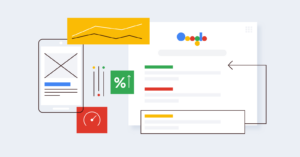Google Search API Leaks Part 4: Understanding Google’s Ranking Factors
Our previous discussions have dwelt upon the profound impacts of the Google API leaks on user engagement, content quality, and backlinking strategies. In this penultimate blog entry, we delve into understanding Google’s ranking factors revealed by the leaks and how to optimize for them comprehensively. With such unprecedented transparency, this knowledge allows SEOs to fine-tune their strategies and capitalize on these insights for superior search performance.
The Need to Understand Google’s Ranking Factors
The accidental exposure of Google’s internal documents provided a rare glimpse into over 14,000 potential ranking features. Understanding these factors, including PageRank variations, site authority metrics, and user engagement signals, is crucial for optimizing your SEO strategy and staying ahead of the curve.
Key Ranking Factors
1. PageRank Variations:
- Insight – The leaked documents reveal the existence of seven different types of PageRank, including the well-known ToolBarPageRank and the modified PageRank_Rand Fishkin pointed out these diverse PageRank models, highlighting their importance.
- Practical Steps:
- Optimize for Various PageRanks – Understanding hat not all PageRank models function identically is crucial. Create content that appeals to immediate impact (ToolBarPageRank) and sustained relevance (PageRank_NS).
- Focus on Content Quality – Ensure your content meets high-quality standards valued by Google, such as comprehensive information, originality, and depth.
2. Site Authority Metrics
- Insight – Google employs a site-wide authority metric similar to Domain Authority, referred to as siteAuthority. This was discussed by Andrew Ansley, who highlighted the significance of this metric in evaluating new pages based on domain-level aggregate scores.
- Practical Steps:
- Maintain Consistent Quality – Foster high standards across your entire site to boost overall authority. Regularly update content, focus on comprehensive guides, and optimize internal linking.
- Topical Focus – Use natural language processing (NLP) and semantic search techniques to ensure your content aligns with your site’s overarching theme.
3. Topic Authority and Site Focus
- Insight – Topical authority is emphasized through metrics such as siteFocusScore and siteRadius, which determine how well your site’s content adheres to a specific topic. This was alluded to by Tom Capper in his Whiteboard Friday analysis.
- Practical Steps:
- Align Content with Core Topics – Ensure every content piece reinforces your site’s main topic. Use topic clusters and pillar content strategies to establish authority.
- Minimize Deviations – Monitor content to ensure it does not stray too far from your central themes, thereby maintaining a tight topical focus.
Algorithms and Penalties
Overview of Notable Algorithms:
- NavBoost – This ranking signal, confirmed by the leak, utilizes click data from Chrome to influence search rankings.
- Algorithmic Penalties – The documentation details various penalties for poor navigation, low-quality product reviews, and other factors. Fishkin and others have highlighted the importance of these penalties in maintaining site integrity.
- Practical Steps:
- Enhance Navigation – Improve site structure and navigational elements to ensure a user-friendly experience. This includes removing redundancies, fixing broken links, and optimizing site speed.
- High-Quality Reviews – For product reviews, ensure they are thorough, honest, and backed by personal experience. Avoid aggregating content or using low-effort reviews.

Case Studies and Examples
Strong Topic Authority:
- Example – A health website consistently publishes detailed, research-backed articles on wellness and nutrition. This focus has allowed it to maintain a high siteFocusScore and achieve prominent rankings in related searches, demonstrating the importance of aligning content with core topics.
Sites Impacted by Known Penalties:
- Example – A travel blog with cluttered navigation experienced a significant drop in rankings. After improving navigation and ensuring the site was user-friendly, the site saw positive improvements in search visibility, highlighting the importance of maintaining site integrity.
Conclusion
Understanding Google’s ranking factors through these diverse and critical points will be key for optimizing your SEO strategies. By focusing on high-quality content, maintaining topical authority, and enhancing user experience, SEOs can better align with Google’s ranking system and achieve superior results. Check back for our 5th and final installment, as we review what was revealed in the leaked documents focusing on Local SEO.
Resource Citations
- Fishkin, R. (2024, May 31). The Google API Leak Should Change How Marketers and Publishers Do SEO. SparkToro. Retrieved from https://sparktoro.com/blog/11-min-video-the-google-api-leak-should-change-how-marketers-and-publishers-do-seo/?utm_campaign=IPR%20Newsletter&utm_medium=email&_hsenc=p2ANqtz–iQmPLL5m4paVj3ZYpAh3B53uy2lvsCgU2VsYmGtTOIgYldndM0ooKxDExBdUu–h6XNJg2BTtOdbkaffGnTYRF7Obcg
- Capper, T. (2024, June 7). 4 Insights From the Google Leak — Whiteboard Friday. Moz Blog. Retrieved from https://moz.com/blog/google-leak-whiteboard-friday
Stay In Touch.
Subscribe to our monthly email newsletter.
